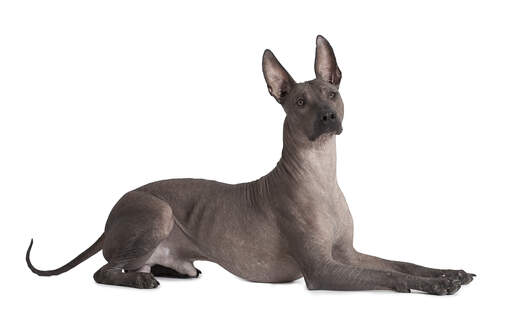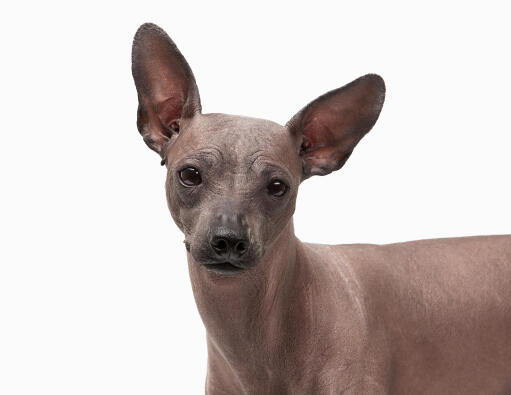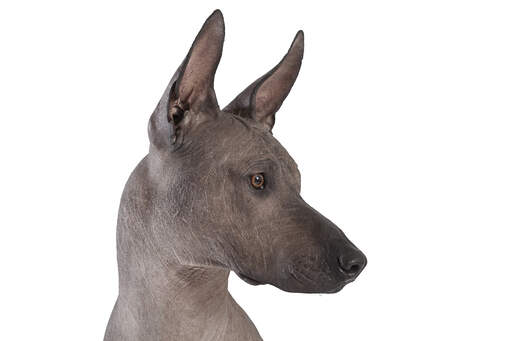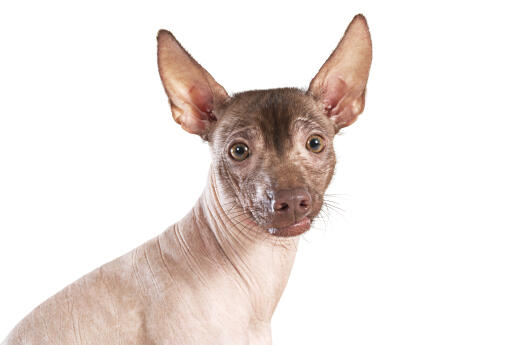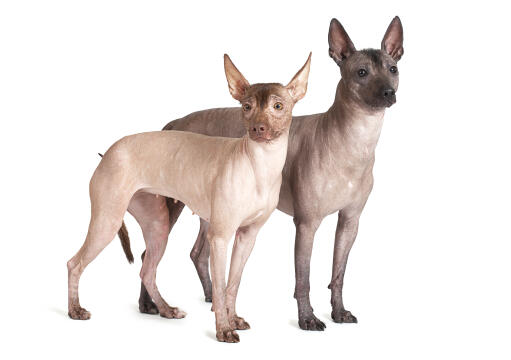Mexican Hairless Dogs





History
The Mexican Hairless dog in English is called the Xoloitzcuintle/i in it's native Mexico or Xolo for short. They come in 3 sizes, Miniature, Intermediate and Standard. Origins date back more than 3,000 years and the dogs were seen as companions and hunters of small prey, but more importantly were a gift from the Aztec Gods to help people transfer to the Afterlife. Today, they are more common after a concerted breeding programme on the 1940's - 50's. They can be born with a coat or without and most litters are born with both. The hairless gene is present in all litters. They are now officially the national dog of Mexico.
Behaviour
Xolos are calm and affectionate dogs who bond closely with their family, but tend to stick closer to one person; but will happily accept attention from other members too. They are naturally wary of strangers in the home and outside and need proper early socialisation to prevent aggressiveness and defensiveness of the home. Inviting lots of different people into the home and exposing them to new situations will help make them well rounded and friendly. They are fine with respectful children, but will not tolerate being teased or having their tail pulled. They can learn to live with cats, but only from a very young age as they will chase most small animals. They can be snappy with strange dogs inside and outside the home, so make sure they are used to other dogs by taking them to puppy classes.
The Xolo is a great guard that rarely barks, so when they do, you know something is wrong. They were called 'Doctor Dogs' as the heat they gave off would comfort people when ill or those with arthritis.
Training takes time and patience, but they can learn and do so quickly; if they are in the mood. Positive reinforcement and food rewards work well and once they have learnt something they will retain it. They are sensitive but clever and don't react well to harsh treatment which can lead to snappy behaviour. Keeping training short, consistent and fun will pay off to produce a well behaved dog, that knows if they are pushing boundaries - a sharp look from you is usually enough to stop the behaviour.
They have quite high exercise needs and need the chance to burn off nervous energy with a good run and play session. Their tendency to chase small animals, means letting them off the lead in a non secure area should be avoided even if you think their recall is excellent; their prey drive is stronger than the desire to return to you! They can usually jump a 6' fence. Providing lots of toys will keep them out of mischief. They are physically mature at 12 months, but mentally around two years.
Being a hairless dog should in theory mean no grooming, but this isn't the case. They do keep themselves very clean, almost like a cat, but do require bathing every so often with a gentle shampoo and sun screen should be applied when needed.
Temperament
Mexican Hairless have an affectionate and companionable temperament. These dogs will become very attached to their owners and will crave physical contact. Agile and alert they do need a good play session and walk daily in order to be content at home. They make good watchdogs but can be wary of house guests and other dogs. Early training and socialisation are important to get a well rounded, confident dog.
Health Problems
There are no known hereditary issues with the breed, but hairless types are usually missing some teeth. Coated types have all there teeth as the dental gene is linked to hairlessness. They will need a coat/jumper during the colder months to keep them warm.
Breed Details
- Status: Common
- Life Expectancy: 12 - 15 years
- Weight: 4 - 20 kg
- Height: Height 9 - 28"(Miniature - Standard)
- Rare: No
- Coat: Short
- Grooming Requirements: Once a week
- Town or Country: Either
- Minimum Home Size: Small House
- Minimum Garden Size: Small to Medium Garden
- Breed Type: Companion Dog
- Size: Medium
- Energy Level: Medium
- Exercise Required: Up to 1 hour

